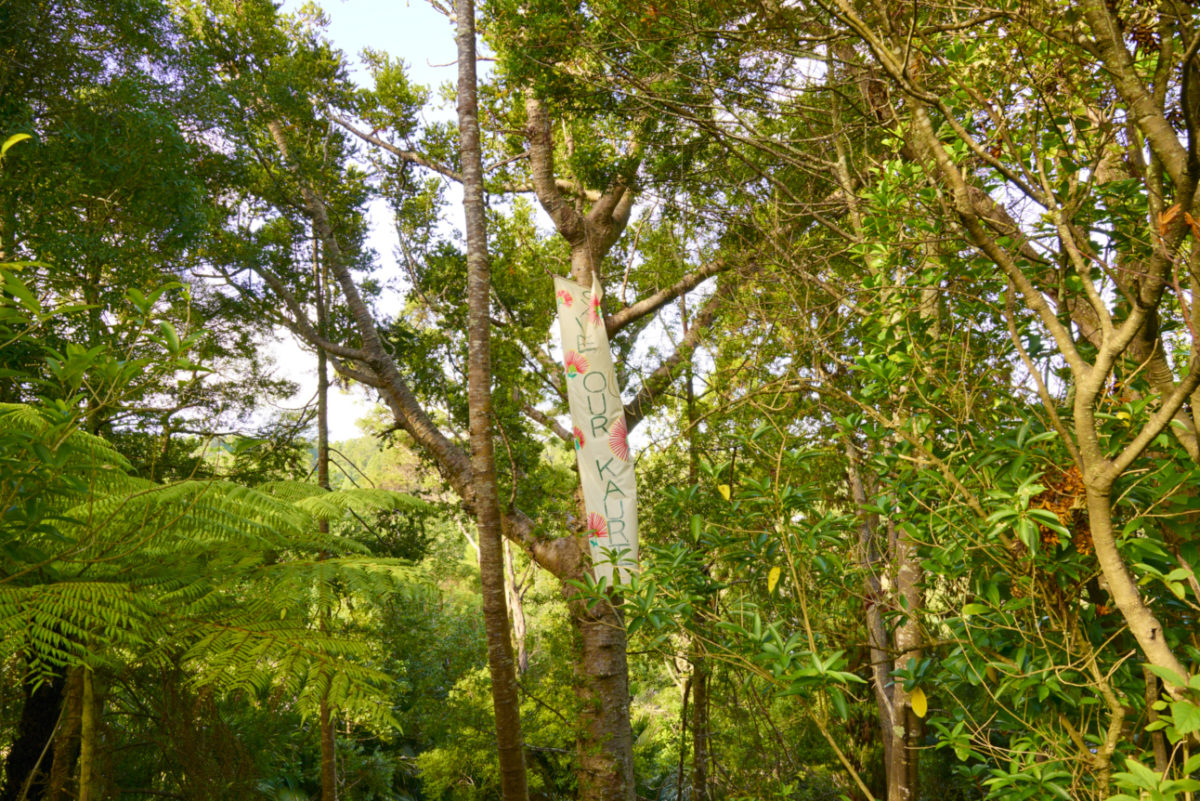We’re grateful for permission to publish this important Expert Evidence from Dr Cate Macinnis-Ng regarding kauri.
The text follows. You may download the PDF here.
EVIDENCE OF DR CATE MACINNIS-NG
ON BEHALF OF SAVE OUR KAURI TRUST
13th February 2020
Qualifications and experience
- I am a plant eco-physiologist and eco-hydrologist and am an Associate
Professor at the School of Biological Sciences at the University of
Auckland. I measure and model carbon and water cycling in forests and
am particularly interested in the effects of global change processes (like
climate change and land use change) on forests and other vegetation. - I received my PhD in 2003 from the University of Technology Sydney
(UTS). I worked at UTS for seven years as a research fellow
researching water use of vegetation in several research groups
including the National Centre for Groundwater Research and Training. I
have published 46 peer-reviewed journal articles and I have written nine
technical reports. - Since moving to New Zealand in 2010, I have been working on the
physiology of kauri. In 2012, I received a Marsden Fund Fast-Start grant
from the Royal Society of New Zealand to study the water use patterns
of these iconic trees. In 2014, I was awarded the Early Career
Research Excellence Award at the University of Auckland and in 2015, I
was awarded a Rutherford Discovery Fellowship by the Royal Society
of New Zealand. - I have been asked by Save Our Kauri Trust to provide an assessment
of the impact of the proposed water treatment plant on protected land
bordered by Woodlands Park Rd, Manuka Rd Titirangi. - I advise that I have read the Code of Conduct for Expert Witnesses
contained in the Environment Court Practice Note 2014 and have
complied with it in preparing this evidence. I confirm that the issues
addressed in this evidence are within my area of expertise and I have
not omitted material facts known to me that might alter or detract from
my evidence. - In this document, I outline the value of the established ecosystems as
an essential part of the landscape and a valuable carbon store.
VALUE OF ESTABLISHED FOREST ECOSYSTEMS - Generally, forests provide us with many goods and services that
support human life. Forest products include wood and gum (these are
often referred to as ecosystem goods). The value of these goods can
be easily determined based on market prices. - Ecosystem services are more difficult to value because they are less
tangible. Carbon uptake and storage is a good example of a forest
ecosystem service. Forests absorb CO2 as they grow and trees store
this carbon in their stems, branches, leaves and roots. Forests also play
an important role in the water cycle as transpiration is one of the major
pathways through which water returns to the atmosphere after rain.
Trees are important for flood mitigation because they collect rainfall on
their leaves and buffer water flow through the landscape. Tree roots are
also important for binding the soil and preventing erosion. - Kauri forests are particularly valuable because they are amongst the
most carbon dense forests in the world. A single tree can store vast
amounts of carbon and will also use large volumes of water each year. - The trees within the proposed area to be felled are not particularly large
but as there are hundreds of trees to be removed, collectively their
carbon storage is considerable. Under a climate emergency, all effort
should be made to protect established forests for the rich carbon
reserves they store both above and below ground. - There are several kauri trees of a relatively young age at the site but as
kauridieback is killing hundreds of trees, all individuals should be
protected because we don’t know which tree will be the future Tāne
Mahuta centuries from now. Ongoing work by one of my PhD students
is just beginning to unravel the physiological responses of kauri to kauri
dieback disease. Disturbance of the site will likely spread the pathogen
due to soil movement by euqipment and hydrological changes due to
removal of trees. Established canopy and root systems provide
protection of the soil by reducing water reaching the understorey and
binding the soil as described below. - During a rainfall event, a large canopy of leaves will capture water until
the leaf surfaces have been saturated. This process is known as
‘wetting up’ and it reduces the amount of water reaching the ground
because the water stays on the leaves until it evaporates once the rain
has cleared. A closed canopy is likely to have a leaf area of 3-4 m of
leaves per unit of ground so this surface area has a significant effect on
the water cycle. - Detailed measurements of rainfall redistribution in kauri forest by
Sangster (1986, unpublished MSc thesis, University of Auckland)
showed interception loss was 44% of incoming rainfall. This is
consistent with other similar forest types around the world and indicates
that only 56% of rainfall reaches the forest floor. Removal of trees
therefore increases water input onto the land surface and increases
water logging and runoff. More runoff can mean more erosion and more
frequent and severe floods in addition to movement of soil, potentially
spreading kauri dieback. - Tree roots are also important for binding soil. Where there is
complicated topography, established trees are important for stabilisation
of any slopes. As a rule of thumb, a tree stores half its biomass above
ground and the other half below ground so the root systems of the
vegetation proposed to be removed would be very large. - There are several notable larger kauri in the vicinity of the area
proposed to be cleared. We are just learning how trees interact below
ground through the rhizosphere. In addition to my concerns about soil
movement due to earth work equipment and water flow, I am also
concerned that the root systems of these trees will be adversely
impacted by the vegetation removal. Significant trees need substantial
buffers for best protection. - Any proposed biodiversity offset will not be a meaningful replacement in
a changing climate. Established forests are better placed to survive
drought because they have deep root systems to access deep water
stores. Seedlings and saplings do not have adequate root structures to
allow them to survive dry periods. Under the current drought conditions,
we are seeing restorations plantings completely fail across the city
because the deveoping soil moisture deficit is killing sensitive seedlings.
As droughts are predicted to become more frequent and severe, we
cannot predict if on offset planting will survive to a mature age.
Established forest has never been more valuable for the carbon it
stores, the water it regulates and it’s ability to survive drought.

